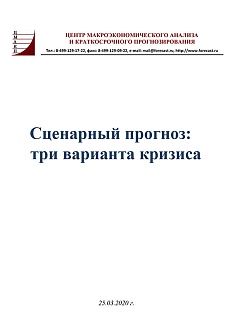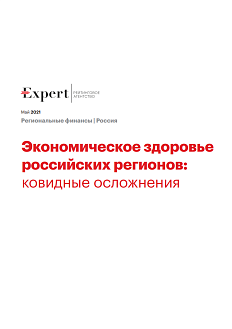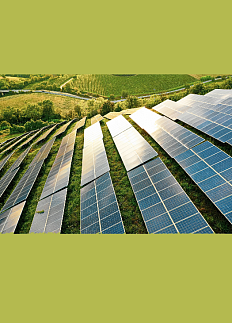There has never been a time in history when even a single nation was fully prepared for the impact of a global crisis. That is true of stock market crashes, the bursting of economic bubbles, and pandemics. The ability of a country to withstand such a test therefore depends on how rapidly and competently it reacts to it. Is it able to mobilize, to judiciously use its reserves, and protect its people? And can it do this without scuppering its economy or shouldering debt which it will be unable to pay back? The American economist and philosopher Nassim Nicholas Taleb found a purely metaphorical term «black swan» to describe large-scale events which occur suddenly, have a major effect, and which are difficult to predict. Since antiquity, a black swan was considered in Western culture to be a rare, seldom-seen bird, and any sighting was considered to be a bad omen. It is therefore no surprise that Talebs use of the term came to be widely adopted. In 2020, the coronavirus so-called for the pathogens crown-like resemblance turned a black swan into a truly royal bird.
The corona test
The first year of the pandemic ended with Russias GDP having declined by just 3% (by way of comparison, the EU suffered a 7.3% loss in GDP). Meanwhile, the completion rate of Russias national projects reached 97.4% by the end of 2020. Russia not only managed to successfully mitigate any economic damage during the global crisis, but also implemented a series of plans to develop infrastructure; build hospitals, schools, nursery schools, roads, and housing; support businesses; and develop science. Work on these national projects which encompass hundreds of objectives has been under way since 2019, following a series of directives by President Vladimir Putin.
PRESIDENTIAL INSTRUCTIONS TO THE GOVERNMENT (THE PRESIDENTIAL ADDRESS TO THE FEDERAL ASSEMBLY ON 21 APRIL 2021)
• To launch a mechanism of extended producers and importers responsibility for the management of products and packaging wastes. • To calibrate the tax legislation.
• To fight poverty, increase incomes.
• To ensure Russias independence in the production of the entire range of vaccines and pharmaceutical substances, including medications against infections that are resistant to the current generation of antibiotics.
• Russia must be prepared to develop its own test systems within four days and to create an eff icacious domestic vaccine.
• To come up with new comprehensive approaches to the development of our energy sector, including new solutions for nuclear generation in the promising areas of hydrogen energy and energy storage.
• To find answers to the climate change challenges, adjust our agriculture, industry, the housing and utilities sector and the entire infrastructure to them, create a carbon utilization sector.
• To create investment protection and promotion agreements.
The success of these national projects has shown that even a black swan has white feathers. These white feathers are the positive and substantial results achieved by national and regional governments to improve peoples lives, given the difficult situation. Nevertheless, the pandemic has not gone away, and Russia has largely had to extinguish the flames with money. On 17 December 2020, Vladimir Putin gave his annual press conference, in which he stated that the government had allocated RUB 4.6 trillion (4.5% of Russias GDP) to combatting the pandemic. Of this figure, RUB 1 trillion was used to support the worst-hit industries, while RUB 838 billion went towards helping people.

Of course, oil and gas companies also came to the countrys aid, as did the National Wealth Fund. In September 2020, Russias Ministry of Finance used it for the first time in two and a half years in order to cover the deficit in the federal budget. According to experts, if lockdown measures were to continue and the economic situation worsen, Russia would have enough reserves at the fund to fulfil its social obligations to its people for five years.

As the COVID-19 crisis began to escalate, the first lockdown was announced in April 2020. Initially planned to last a week, it ended up continuing for a month. People and businesses alike reacted to the news in a state of virtual panic. This is not surprising a lengthy period of downtime loomed, along with the worrying prospect of having to repay subsidized loans. The government therefore took it upon themselves to address the shortfall in budget revenue. These took the form of tax and insurance contribution deferrals, direct payments to families with children, and subsidized loans.

Beneficiaries of the crisis
Thankfully, some industries were unaffected by the pandemic. And indeed, many entrepreneurs came out well from it, specifically those engaged in e-commerce, which grew by a record 255%. Contributing factors included self-isolation, remote working, and a general desire to avoid contact with others during the pandemic. Pharmacology, biotech, and IT companies were also able to increase revenues. Other companies to emerge relatively unscathed from the crisis included those not directly linked to household demand, such as oil, gas and mineral production and processing companies; telecommunications companies; and energy companies. And industries which were seriously impacted by the pandemic experienced a surge in growth in 2021, once the constraints of the lockdowns were lifted.

Supporting the regions
It is important to highlight the work done by regional leaders across Russia to address the economic problems caused by the pandemic. As early as April 2020, President Vladimir Putin gave regional leaders greater authority in order to combat the spread of the coronavirus. And governors not only responded by implementing various bans and restrictions, but also by introducing support measures. During the pandemic, the federal government allocated more than RUB 200 billion to provide additional support to the regions and compensate for lost income. There are also plans to allocate a further RUB 100 billion. These funds have largely been used to purchase medical equipment, compensate for financial losses, and make welfare payments.

Why it is better in Russia
In February 2021, Bloomberg reported that Russia suffered fewer losses compared to major global economies. Analysts from the authoritative agency attributed this result to the Russian governments decision not to impose a strict lockdown in the latter half of the year. Bloomberg has forecast difficulties for the US and Europe in 2021. In contrast, it has expressed a more positive outlook for Russia, with GDP forecast to grow by 3%. That said, risks remain, and much still depends on vaccination rates and the possibility of a third wave of the coronavirus. It is therefore important to note that Russia had registered three vaccines by February of this year: CoviVac, produced by the Chumakov Centre; Sputnik V, produced by the Gamaleya Research Institute; and EpiVacCorona, produced by the Vector Institute. In the first two months of vaccination alone, 4.3 million people have received a jab.







